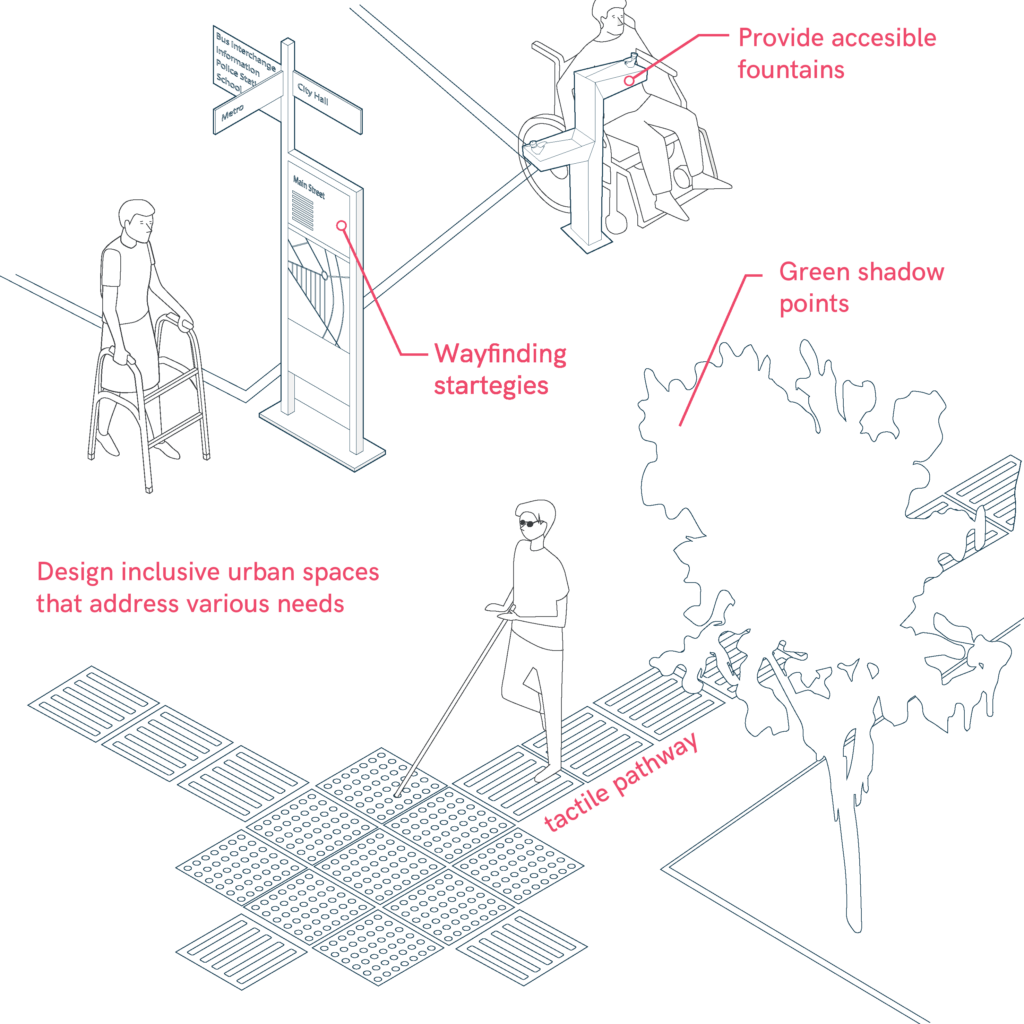Promote Diversity, Autonomy, and Proximity
In urban design, inclusivity must be at the core of every project. Public spaces should be designed to accommodate people of all ages, genders, and physical conditions, considering their varied needs. This ensures that everyone, particularly marginalized groups, can engage with the environment safely and independently. Below are key principles to ensure urban spaces are accessible and inclusive.

- Design inclusive urban spaces that address various needs, considering age, gender, and physical conditions.
- Avoid one-size-fits-all solutions; prioritize varied experiences to ensure inclusivity for all, especially marginalized groups.
- Prioritize safety and autonomy for people with disabilities, parents with strollers, and the elderly.
- Ensure key services and public transport are located within walking distance, promoting easy access for all.
- Integrate residential, commercial, and recreational spaces to reduce commutes and improve daily efficiency.
